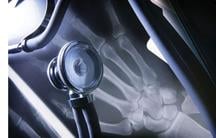
January 21, 2011 – The U.S. Food and Drug Administration (FDA) this week unveiled a plan containing 25 actions it intends to implement during 2011 to improve its 510(k) review of medical technology, the most common path to market for medical devices.
Key actions include streamlining the "de novo" review process for certain innovative, lower-risk medical devices and clarifying when clinical data should be submitted in a premarket submission. The FDA said it will offer guidance that will increase the efficiency and transparency of the review process. The FDA will also establish a new Center Science Council of senior FDA experts to assure timely and consistent science-based decision-making.
These actions will result in "a smarter medical device program that supports innovation, keeps jobs here at home, and brings important, safe, and effective technologies to patients quickly," said Jeffrey Shuren, M.D., J.D., director of the FDA's Center for Devices and Radiological Health (CDRH).
Before marketing most low-risk medical products, such as some types of catheters or diagnostic imaging devices, manufacturers must provide the FDA with a 510(k) premarket notification submission. The designation is related to the section of the Federal Food, Drug, and Cosmetic Act that describes this notification requirement. Generally, 510(k)s must demonstrate that a proposed product is substantially equivalent to another, legally marketed medical device that is also lower-risk.
In September 2009, CDRH set up two internal working groups to address concerns relating to the premarket notification process – industry argued that the 510(k) process was unpredictable, inconsistent and opaque, while consumers and healthcare professionals argued that the review process wasn't robust enough. At the same time, CDRH also asked the independent, nonprofit Institute of Medicine to study the program. The FDA said that review is still underway.
In a transparent effort, CDRH sought public input during both the development and review of the two internal reports. The center held two public meetings in the Washington area and separate town hall meetings in Minneapolis, Boston and Los Angeles. The FDA also received 76 written comments to three public dockets from industry members, healthcare professional organizations, consumer groups, patient groups, third-party payers, venture capital groups, agency staff, trial lawyers, foreign regulatory bodies, law firms, members of the public, consulting firms and academic institutions.
The two working groups issued 55 recommendations in August 2010. After reviewing public comment, CDRH now intends to take 25 actions to improve the 510(k) program in 2011, including new guidance and enhanced staff training. CDRH also is giving the Institute of Medicine an opportunity to provide feedback on seven recommendations before making a final decision and is planning for a public meeting in April to seek additional feedback on two other recommendations.
"We look forward to implementing these changes in support of our overall mission: improving the health of the American public," Shuren said.
For more information: www.fda.gov/AboutFDA/CentersOffices/CDRH/CDRHReports/ucm239448


 August 09, 2024
August 09, 2024 








